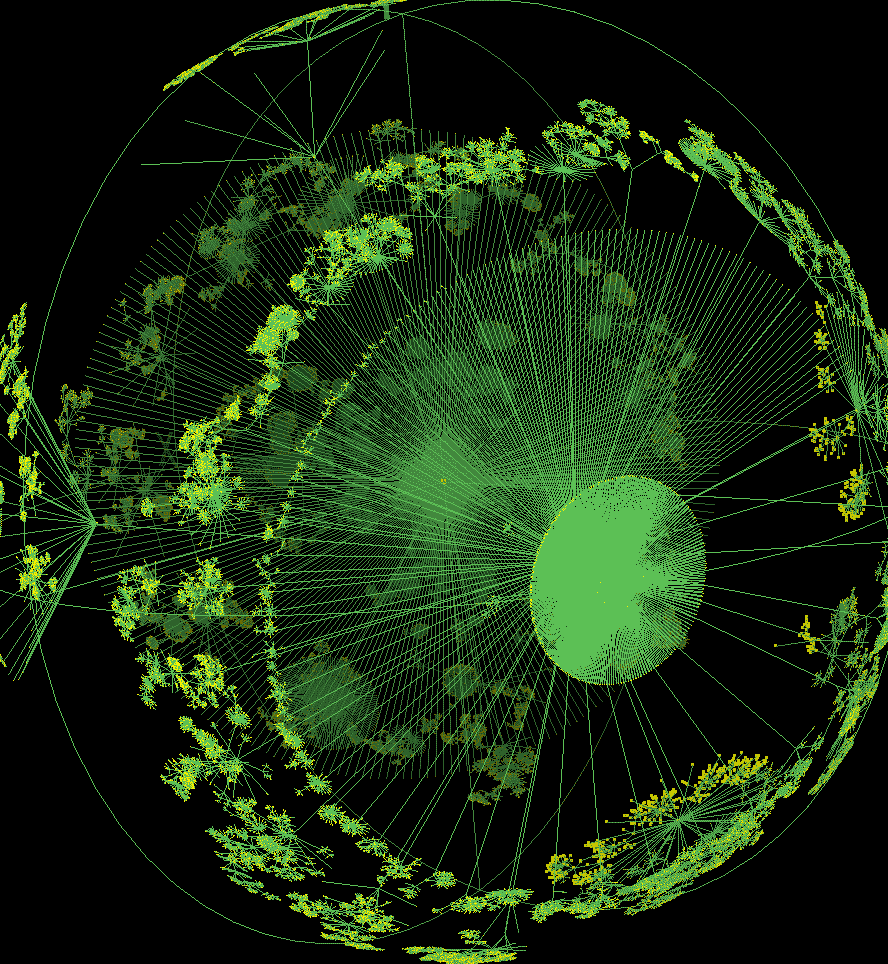Coined in 1984 by William Gibson, the term cyberspace was the buzzword of the 1990s. In those dark ages, way way way before Google maps and geotagging, academic conventional wisdom tended to regard information environments as a space apart, the Other Plane, a habitat of pure information – a “cybernetic space”. Ludicrous, right? Yet, a number of prominent scholars have produced excellent research on the topic, mainly in the fields of cultural studies, media studies, and humanities. So, it was a bit of a surprise when, at the very end of the decade, geographers Martin Dodge & Rob Kitchin, came up with a thought-provoking book called Mapping Cyberspace (2000).
If information environments are actual spaces, how can we represent them cartographically? And what’s their link to physical spaces (and to their visualizations)? These were the insightful questions the authors were asking the scientific community – which since then has started providing answers, and hasn’t stopped yet.
Dodge and Kitchin’s book was associated to a visually intriguing and analytically rich website. The (alas) now-defunct cybergeography.org archived and classified more than one hundred maps of informational spaces – from connectivity maps, to topologies of Internet, to cables and routing infrastructures, to maps of virtual communities and online 3D worlds, to early Web contents spatialization tools. That resulted in another book, the Atlas of Cyberspace (2001), which you can now download for free, under Digital Commons license. If you can shake that eerie “how we used to be” feeling, you will (re)discover an ambitious and challenging work that has rightly received a fair share of attention.
Martin Dodge & Rob Kitchin (2001) Atlas of Cyberspace. London, Addison-Wesley.
Martin Dodge & Rob Kitchin (2000) Mapping Cyberspace. London, Routledge.
